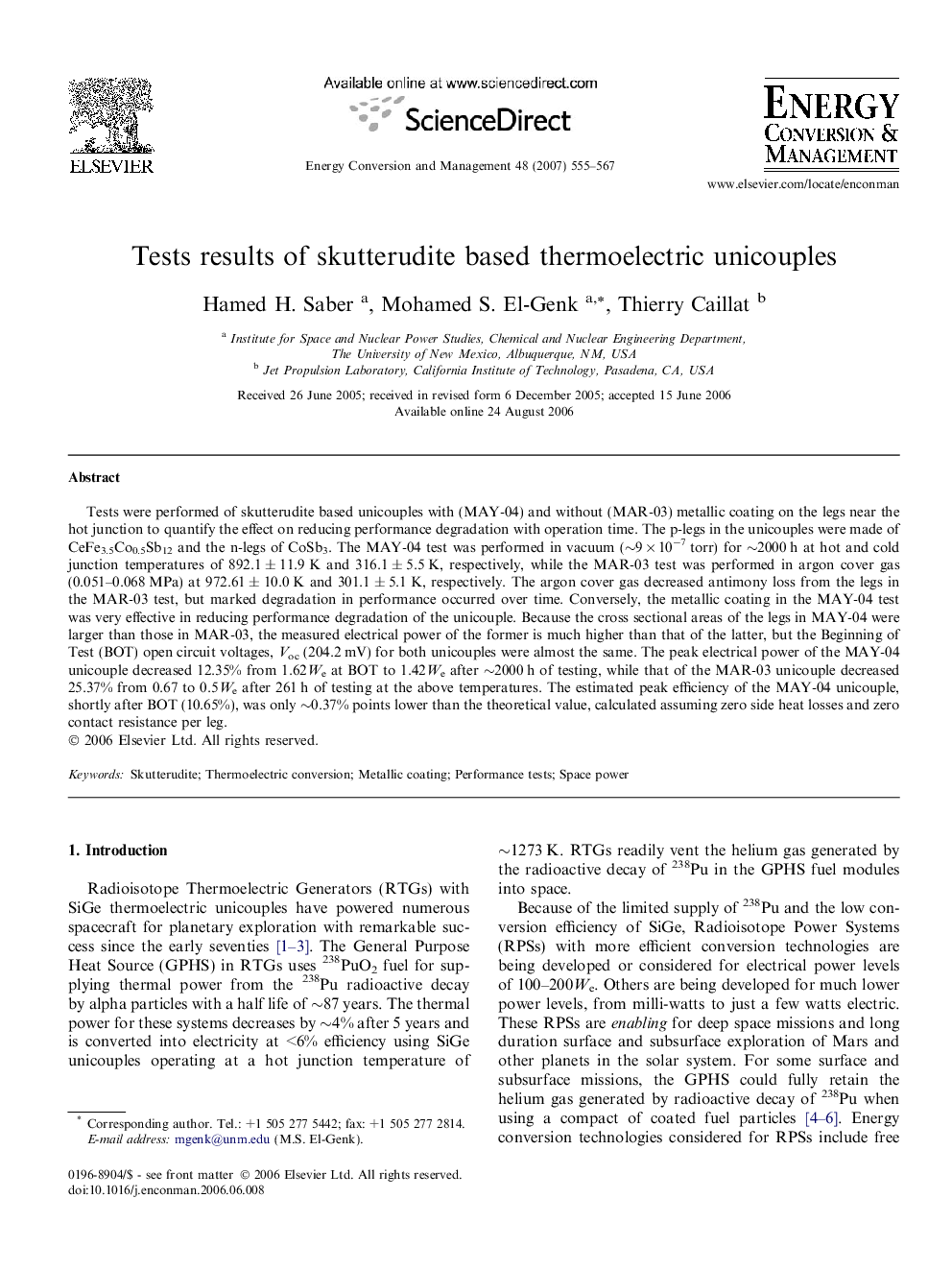| Article ID | Journal | Published Year | Pages | File Type |
|---|---|---|---|---|
| 773023 | Energy Conversion and Management | 2007 | 13 Pages |
Tests were performed of skutterudite based unicouples with (MAY-04) and without (MAR-03) metallic coating on the legs near the hot junction to quantify the effect on reducing performance degradation with operation time. The p-legs in the unicouples were made of CeFe3.5Co0.5Sb12 and the n-legs of CoSb3. The MAY-04 test was performed in vacuum (∼9 × 10−7 torr) for ∼2000 h at hot and cold junction temperatures of 892.1 ± 11.9 K and 316.1 ± 5.5 K, respectively, while the MAR-03 test was performed in argon cover gas (0.051–0.068 MPa) at 972.61 ± 10.0 K and 301.1 ± 5.1 K, respectively. The argon cover gas decreased antimony loss from the legs in the MAR-03 test, but marked degradation in performance occurred over time. Conversely, the metallic coating in the MAY-04 test was very effective in reducing performance degradation of the unicouple. Because the cross sectional areas of the legs in MAY-04 were larger than those in MAR-03, the measured electrical power of the former is much higher than that of the latter, but the Beginning of Test (BOT) open circuit voltages, Voc (204.2 mV) for both unicouples were almost the same. The peak electrical power of the MAY-04 unicouple decreased 12.35% from 1.62We at BOT to 1.42We after ∼2000 h of testing, while that of the MAR-03 unicouple decreased 25.37% from 0.67 to 0.5We after 261 h of testing at the above temperatures. The estimated peak efficiency of the MAY-04 unicouple, shortly after BOT (10.65%), was only ∼0.37% points lower than the theoretical value, calculated assuming zero side heat losses and zero contact resistance per leg.
